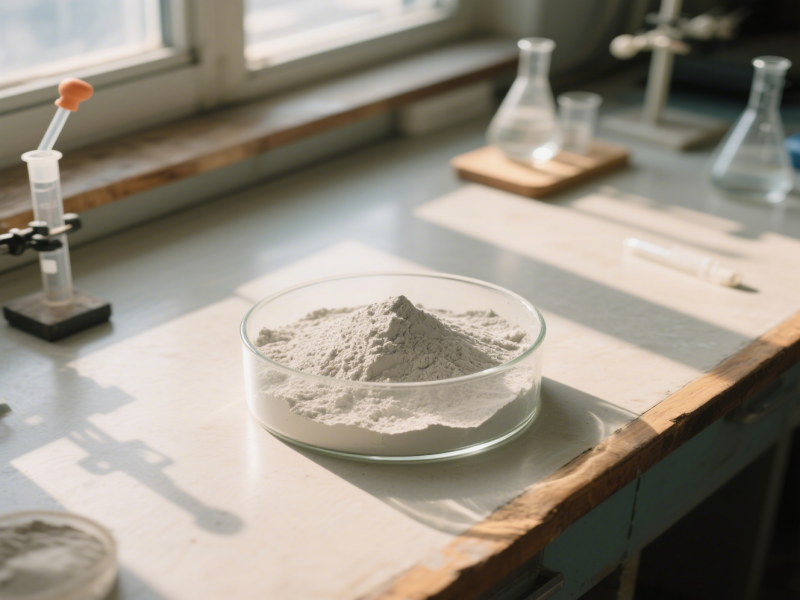News detail
Lightweight refractory castable
Lightweight refractory castable is an important high temperature resistant material. The following is a detailed introduction to it:
1.Definition and composition
Lightweight refractory castables are amorphous refractory materials that can be cast on site and are made of refractory lightweight aggregate and powder, binder and admixture. Generally, castables with a bulk density less than 1800kg/m³, or a total porosity greater than 45%, and a linear shrinkage rate less than 1.5% at a specified temperature are lightweight refractory castables.
2.Main features
- Lightweight and high strength: Lightweight refractory castables have lower density and higher strength, which can reduce the weight of the kiln, while improving the load-bearing capacity and service life of the kiln.
- Good thermal insulation performance: Due to its low thermal conductivity, lightweight refractory castables can effectively reduce heat transfer and improve the insulation effect of the kiln, thereby reducing energy consumption.
- Excellent thermal shock resistance: In an environment with large temperature changes, lightweight refractory castables can maintain good stability, reduce thermal stress damage to the kiln, and extend the service life of the equipment.
- Convenient construction: Lightweight refractory castables can be cast on site without complicated prefabrication and installation processes, greatly shortening the construction period. At the same time, it has good workability, strong adhesion, long initial setting time and construction operation time, fast strength growth, strong impermeability, and is easy to ensure construction quality.
- Corrosion resistance: Lightweight refractory castables are resistant to acid and acidic gas corrosion, and can also resist alkali corrosion, which can improve the air tightness, integrity and corrosion resistance of the chimney lining wall.
- Environmental performance: Lightweight refractory castables are made of inorganic materials, do not contain harmful substances, and are harmless to the environment.
3.Types
Lightweight refractory castables mainly include expanded perlite castables, expanded vermiculite castables, ceramsite castables and alumina hollow ball castables.
4.Construction method
- Mixing: Use a mixer to mix the aggregate, binder and admixture in proportion, then add water and mix evenly. The mixing time should be adjusted according to the specific situation to ensure that there is no agglomeration.
- Casting: Pour the mixed lightweight refractory castable into the mold quickly for casting. During the casting process, attention should be paid to controlling the casting thickness and interval time.
- Vibration: Use manual or mechanical vibration to make the castable fully dense in the mold.
- Finishing: Perform secondary finishing on the surface of the castable to prevent cracks during shrinkage.
- Curing: According to the specific curing requirements, water spray curing or natural curing is carried out. The curing time generally ranges from several days to one week, which is determined according to the construction environment and material properties.

5.Application fields
- Industrial kilns: Lightweight refractory castables are widely used in the linings of various industrial kilns, such as ceramic kilns, glass kilns, cement kilns, etc., to improve the thermal insulation performance of the kilns and extend their service life.
- Power industry: In thermal power plants, lightweight refractory castables are used in the combustion chamber and flue of boilers to improve the thermal efficiency of boilers and reduce heat loss.
- Chemical industry: In the chemical production process, lightweight refractory castables are used for the lining of high-temperature reactors and pipelines to ensure the stable operation of equipment and extend its service life.
6.Development Trends
- Material performance optimization: In the future, lightweight refractory castables will pay more attention to the optimization of material properties, such as improving refractoriness, reducing thermal conductivity, and enhancing resistance to chemical erosion.
- Environmental protection and energy saving: With the increasing awareness of environmental protection, the research on lightweight refractory castables will pay more attention to environmental protection and energy saving, such as the development of new binders and admixtures with low pollution and low energy consumption.
- Improvement of construction technology: The improvement of construction technology will further improve the construction efficiency and quality of lightweight refractory castables, such as the use of mechanized and automated construction equipment, reducing manual operations, and improving construction accuracy.
- Expansion of application areas: With the application of new materials and new technologies, the application areas of lightweight refractory castables will be further expanded, such as the growing demand for high-temperature materials in new energy, aerospace and other fields.
In summary, lightweight refractory castables are widely used in various industrial fields due to their advantages of light weight, high strength, good thermal insulation, strong thermal shock resistance, convenient construction, corrosion resistance and environmental protection. In the future, with the continuous advancement of science and technology and the continuous expansion of application fields, lightweight refractory castables will usher in a broader development space and application prospects.


Send inquiry
Please Leave your message you want to know! We will respond to your inquiry within 24 hours!